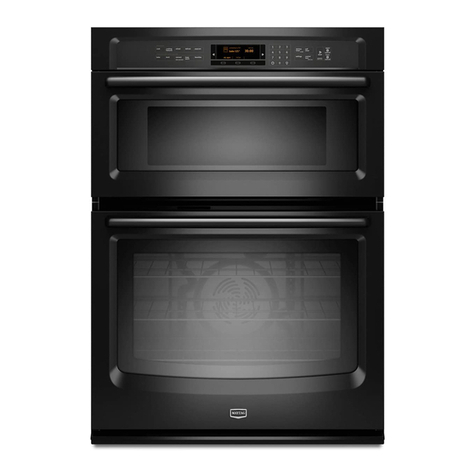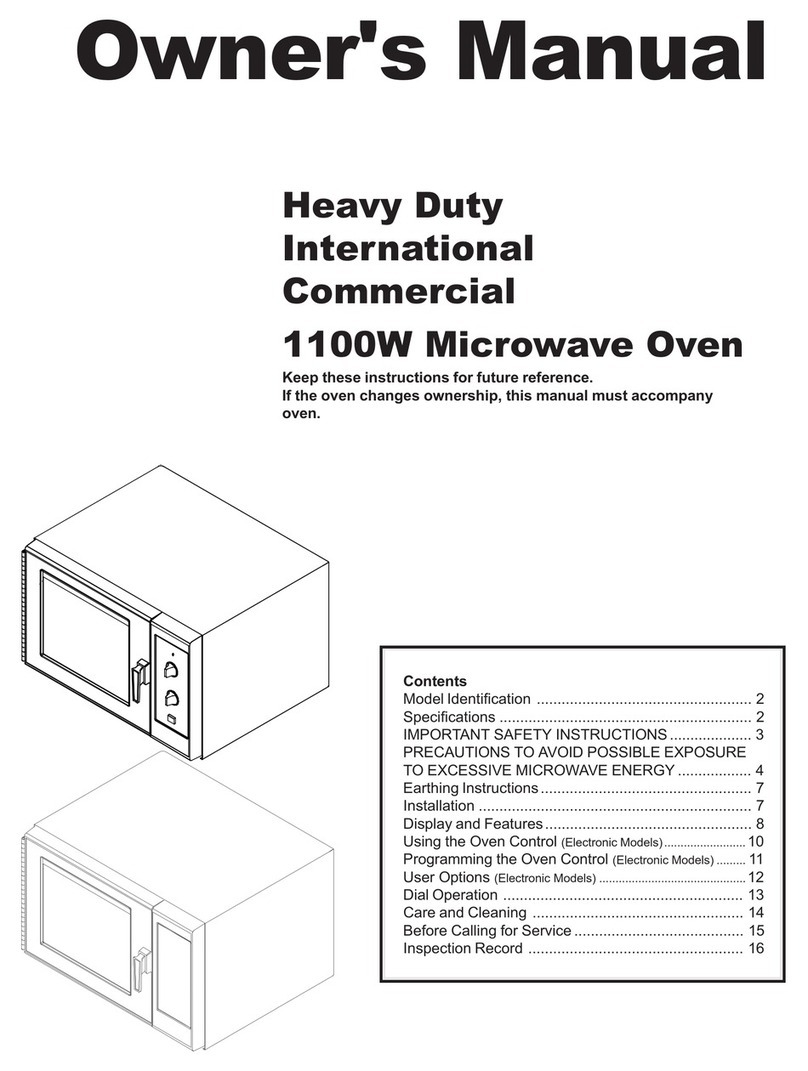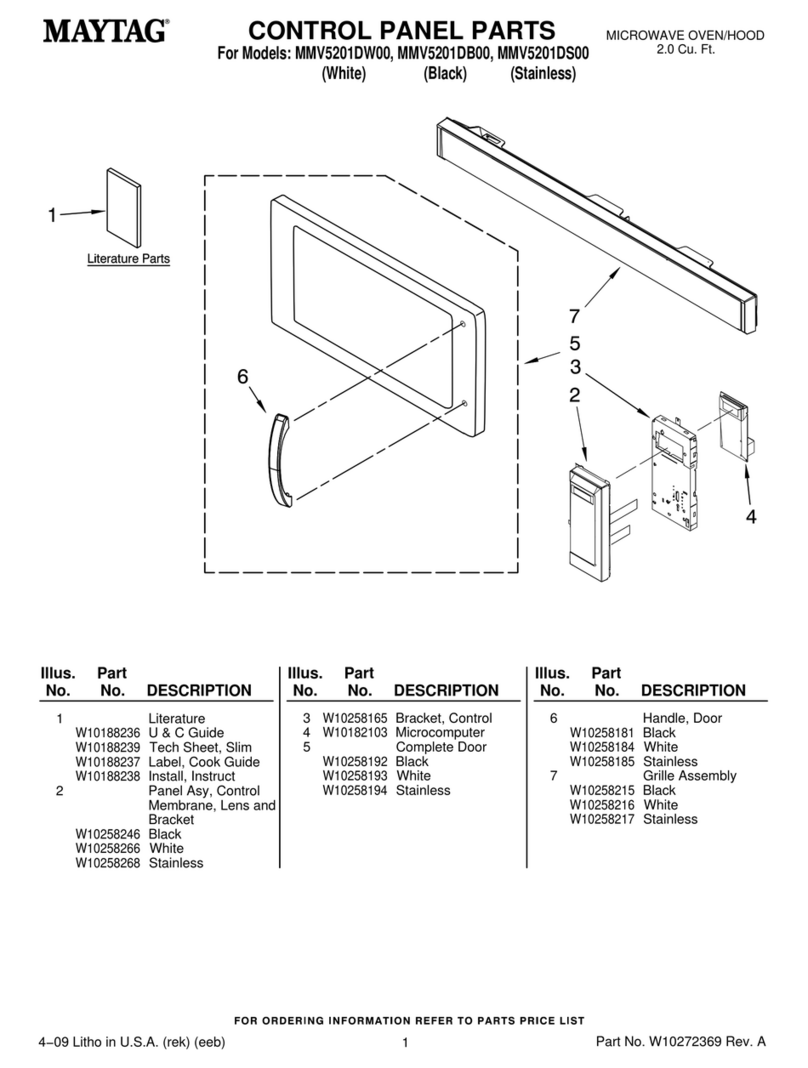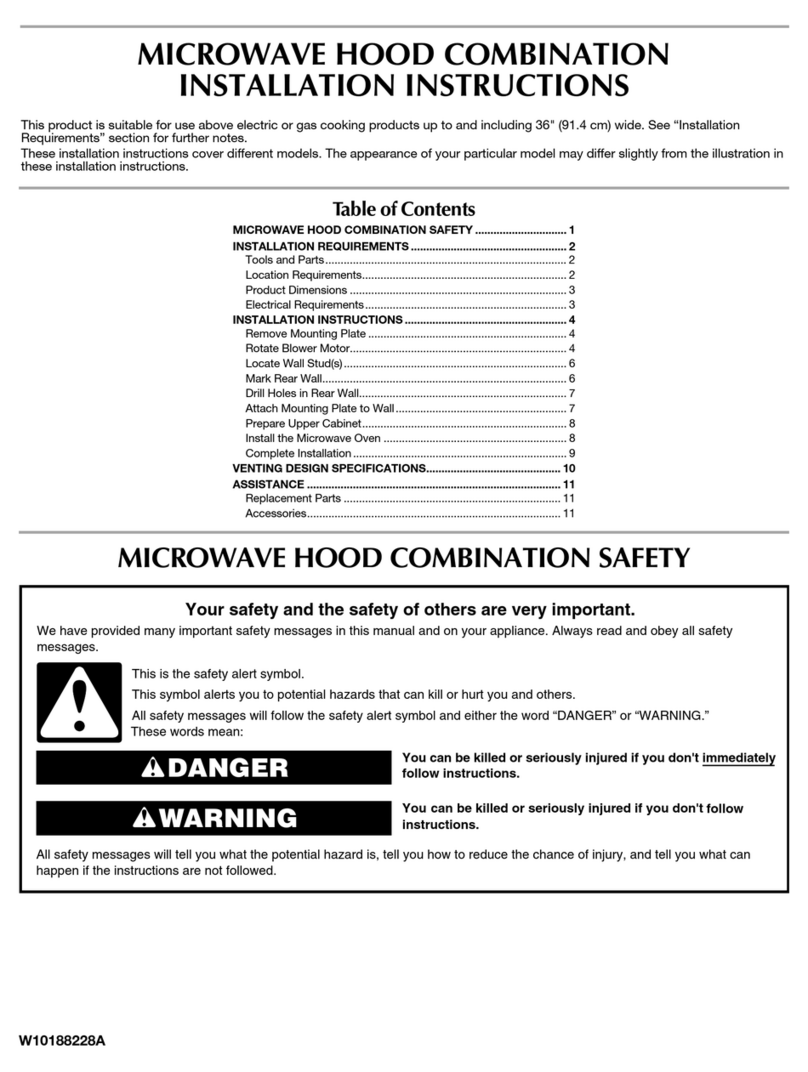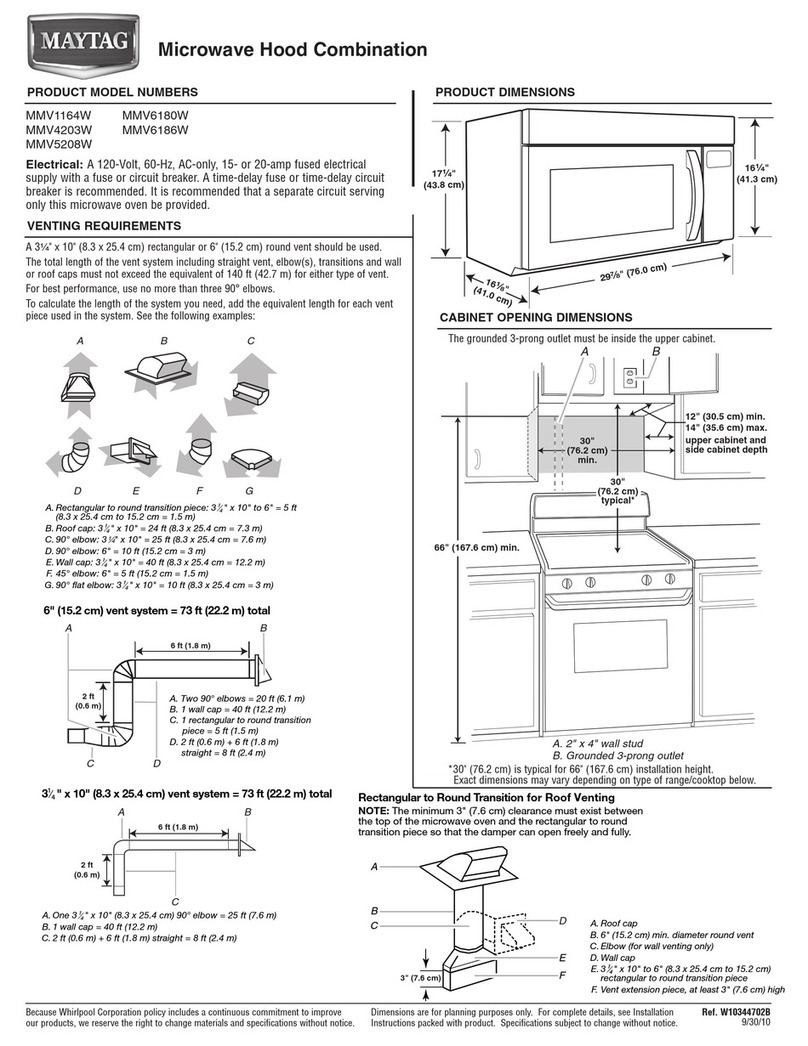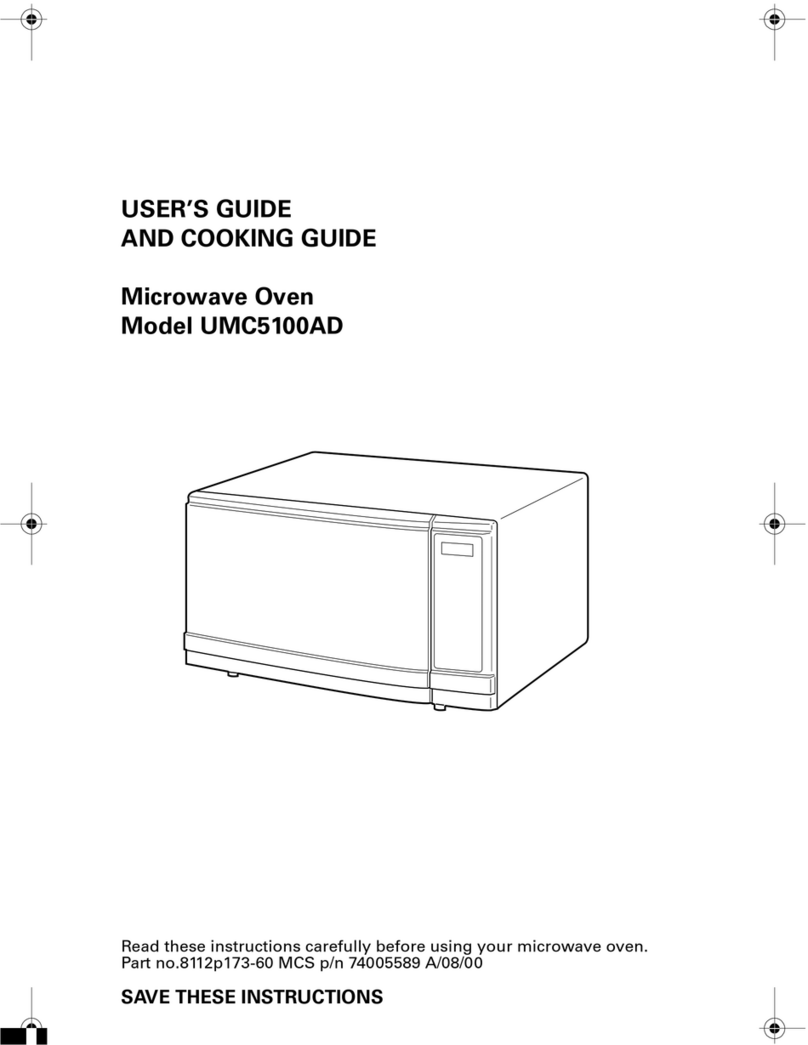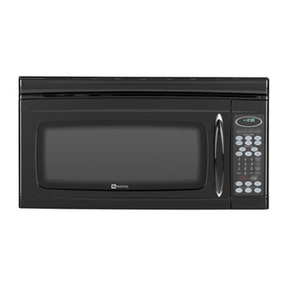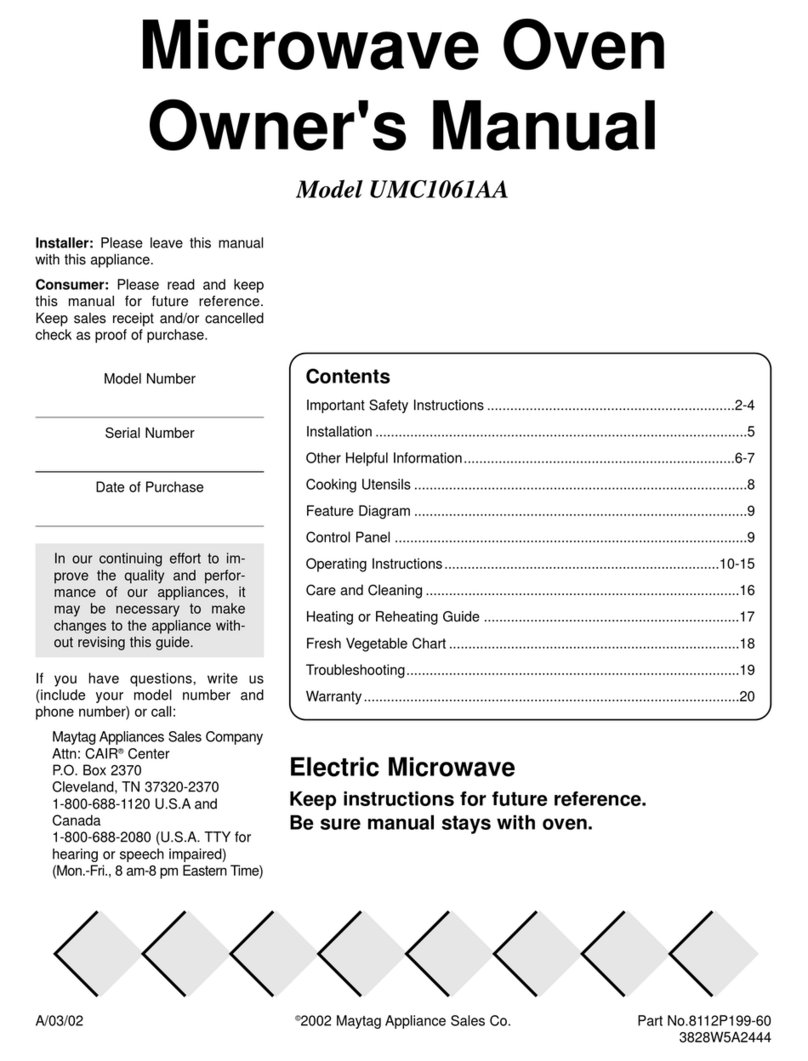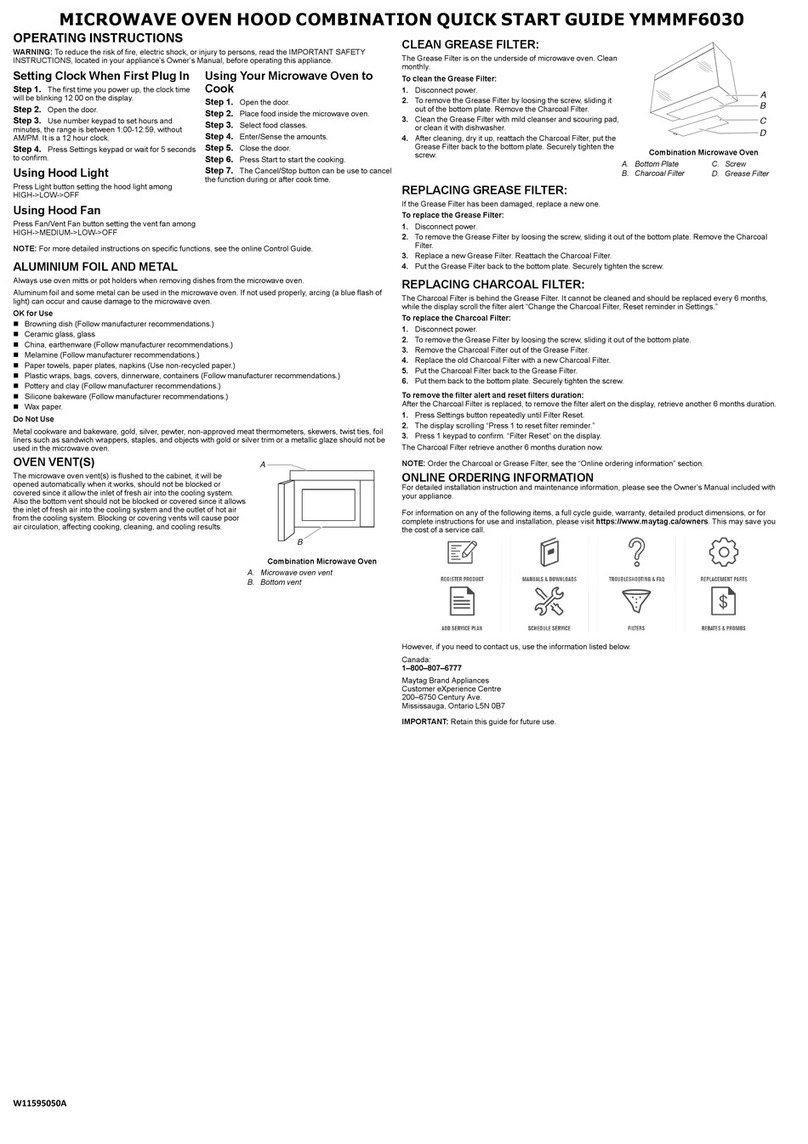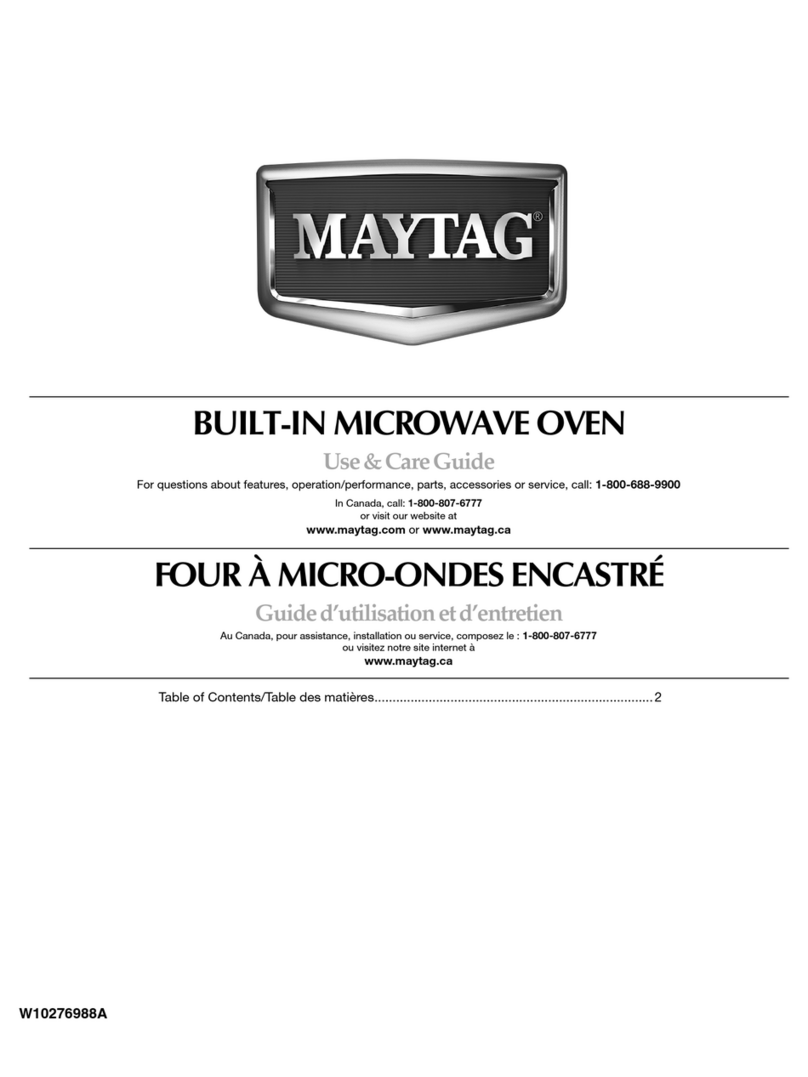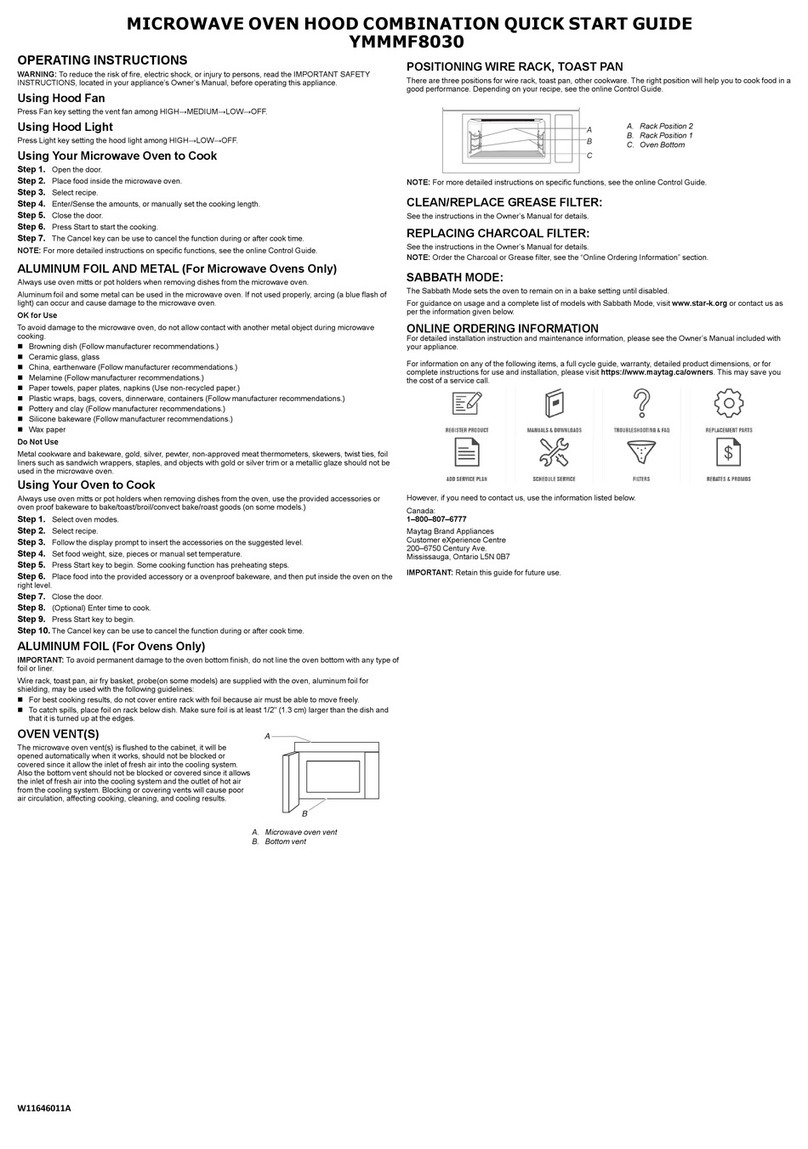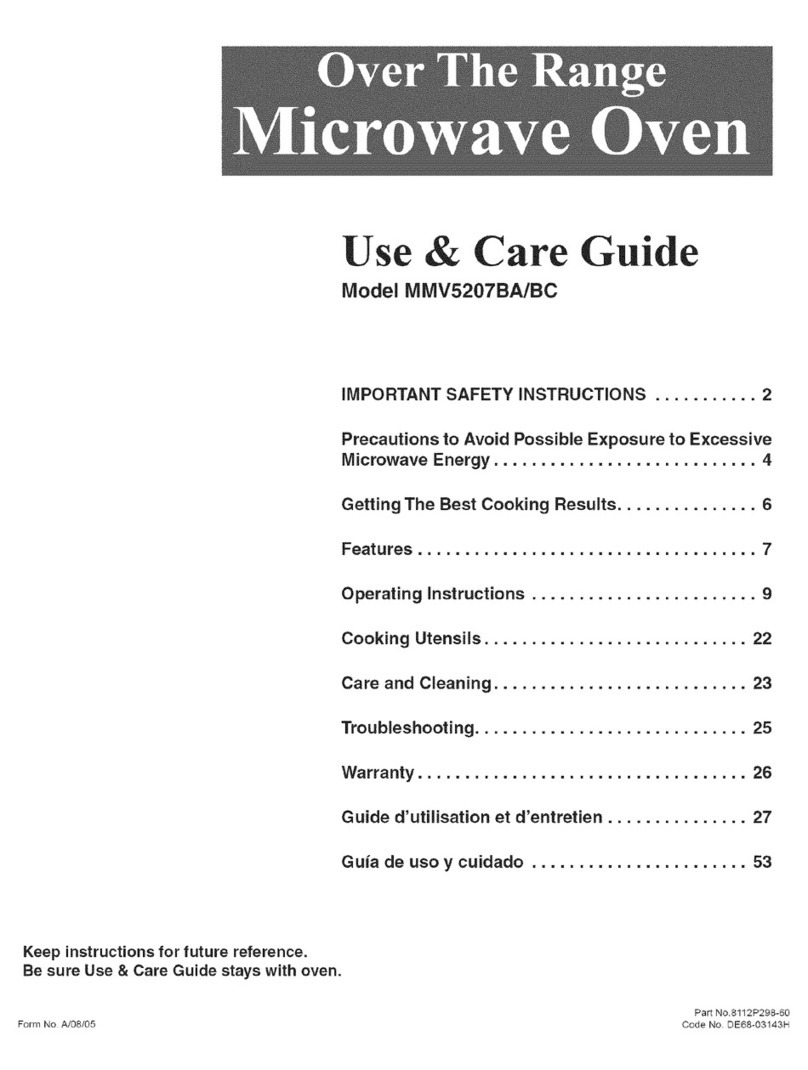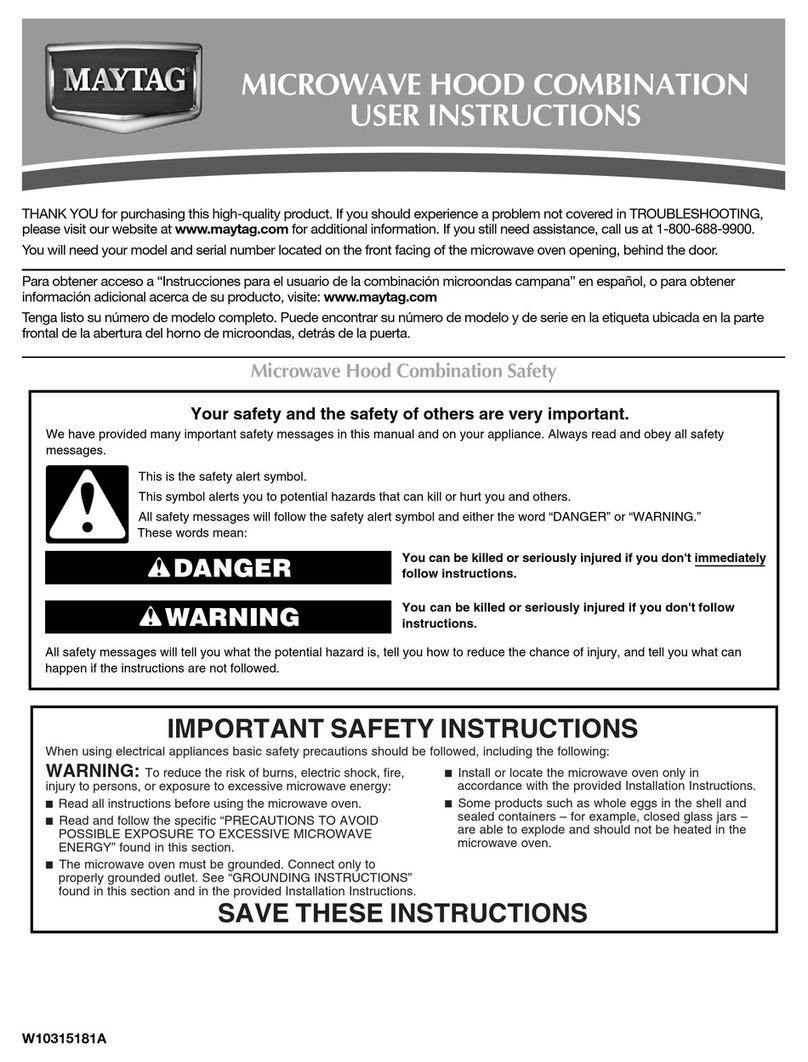IMPORTANT SAFETY INSTRUCTIONS
(continue.A}
---Do not use the oven for storage purposes. • Removethe temperature probe from the oven
Do not leave paperproducts,cooking utensils when not using it to cook with. If you leavethe
or food in the oven when not an use,probe inside the oven without inserting itin food
--Ifmaterials inside oven should ignite, keep or liquid, and turn on microwave energy, it can
oven door closed, turn oven off, and disconnect create electrical arcing in the oven and damage
power cord. or shut off power at the fuse or oven walls.
circuil breaker panel. • Plastic eookware--Plastic cookware designed
for microwave cooking is very useful, but should
•Some products such aswhole eggsand sealed be used carefully. Evenmicrowave-safe plastic
containers--for example, closed jars--will may not be as tolerant of overcooking conditions
explode and should not be heated in this as are glass or ceramic materials and may
microwave oven. Such use of the microwave soften or char if subjected to short periods of
oven could result ill injury, overcooking, in longer exposures to overcooking,
the food and cookware could ignite. For these
•Avoid heating baby food in glass jars, even with reasons: 1)Use microwave-safe plastics only and
the lid off. Make sure all infantfood is thoroughly use them in strict compliance with the cookware
cooked. Stir food to distribute the heat evenly, manufacturer's recommendations. 2) Do not
Be careful to prevent scalding when warming subjectempty cookware to microwaving.
formula or breast milk. The container may fee] 3) Do not permit children to use plastic
cooler than the milk really is. Always test the cookware without complete supervision.
milk before feeding the baby.
•Don't defrost frozen beverages in narrow • When cooking pork, follow the directions
necked bottles (especially carbonatedbeverages),exactly and always cookthe meatto an internal
Even if the container isopened, pressure can build temperature of atleast I70°E Thisassures that.
up.This can cause the container to burst, possiblyintheremote possibility thattrichina may be
resulting in injury, presentin the meat, it will bekilled and meat
•Use foil only as directed in this guide. TVwill be safeto eat.
dinnersmay be microwaved in foiltrays less than • Do not boil eggs in a m/crowave oven.
3/4" high: removethe top foil cover andreturnthe Pressurewill build up inside egg yolk andwill
tray to the box.When using foil in the microwave causeit toburst,possibly resuking in injury.
oven. keep the foil (other than metal shelf) at
least I inch away fromthe sides of the oven. _• Foods with unbroken outer"skin"
such as potatoes, sausages, tomatoes.
_.Cookware may becomehot because apples, chicken livers and other
of heat transferred from the heated giblets, and egg yolks _see previous
food. Pot holders may be needed to caution) should be pierced to allow
handle the eookware, steam to escape during cooking.
•Foods cooked in liquids(such as pasta)may tend
to boil over more rapidly than foods containing •Not all plastic wrapis suitable for usein
less moisture. Should this occur, refer to the Care microwave ovens. Check the package for
and Cleaning sectiun/s) for instructions on how to proper use.
clean the inside of the oven.
. Spontaneous boiling--Under
certainspecialcircumstances.
•ThermometerhDonot use a thermometer in liquids may start to boilduring
food you are microwawngunless the thermometer or shortlyafterremoval from
is designed orrecommendedfor use inthe the microwave oven. Toprevent
rmcrowaveoven. burnsfrom splashing liquid,stir the
liquidbrieflybefore removing the
containerfrom the microwave oven.
4

